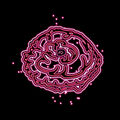Template:Selected anniversaries/February 23: Difference between revisions
No edit summary |
No edit summary |
||
| Line 10: | Line 10: | ||
||1603: Andrea Cesalpino dies ... philosopher, physician, and botanist. Pic. | ||1603: Andrea Cesalpino dies ... philosopher, physician, and botanist. Pic. | ||
||1603: François Viète, French mathematician dies. His work on new algebra was an important step towards modern algebra, due to its innovative use of letters as parameters in equations. | ||1603: François Viète, French mathematician dies. His work on new algebra was an important step towards modern algebra, due to its innovative use of letters as parameters in equations. No DOB. Pic. | ||
||1739: At York Castle, the outlaw Dick Turpin is identified by his former schoolteacher. Turpin had been using the name Richard Palmer. | ||1739: At York Castle, the outlaw Dick Turpin is identified by his former schoolteacher. Turpin had been using the name Richard Palmer. Pic (imagined). | ||
File:Laura Bassi.jpg|link=Laura Bassi (nonfiction)|1742: Physicist and academic [[Laura Bassi (nonfiction)|Laura Bassi]] uses [[Gnomon algorithm functions]] to translate Newton's ideas of physics and natural philosophy into Italian. | File:Laura Bassi.jpg|link=Laura Bassi (nonfiction)|1742: Physicist and academic [[Laura Bassi (nonfiction)|Laura Bassi]] uses [[Gnomon algorithm functions]] to translate Newton's ideas of physics and natural philosophy into Italian. | ||
| Line 18: | Line 18: | ||
File:Carl Friedrich Gauss 1840 by Jensen.jpg|link=Carl Friedrich Gauss (nonfiction)|1855: Mathematician, astronomer, and physicist [[Carl Friedrich Gauss (nonfiction)|Carl Friedrich Gauss]] dies. He had an exceptional influence in many fields of mathematics and science and is ranked as one of history's most influential mathematicians. | File:Carl Friedrich Gauss 1840 by Jensen.jpg|link=Carl Friedrich Gauss (nonfiction)|1855: Mathematician, astronomer, and physicist [[Carl Friedrich Gauss (nonfiction)|Carl Friedrich Gauss]] dies. He had an exceptional influence in many fields of mathematics and science and is ranked as one of history's most influential mathematicians. | ||
||1886: Charles Martin Hall produced the first samples of man-made aluminum, after several years of intensive work. He was assisted in this project by his older sister, Julia Brainerd Hall. | ||1886: Charles Martin Hall produced the first samples of man-made aluminum, after several years of intensive work. He was assisted in this project by his older sister, Julia Brainerd Hall. Pic. | ||
File:Émile Zola.jpg|link=Émile Zola (nonfiction)|1898: [[Émile Zola (nonfiction)|Émile Zola]] is imprisoned in France after writing "J'accuse", a letter accusing the French government of antisemitism and [[Dreyfus affair (nonfiction)|wrongfully imprisoning Captain Alfred Dreyfus]]. | File:Émile Zola.jpg|link=Émile Zola (nonfiction)|1898: [[Émile Zola (nonfiction)|Émile Zola]] is imprisoned in France after writing "J'accuse", a letter accusing the French government of antisemitism and [[Dreyfus affair (nonfiction)|wrongfully imprisoning Captain Alfred Dreyfus]]. | ||
| Line 30: | Line 30: | ||
||1917: Jean Gaston (Jean-Gaston) Darboux dies ... mathematician. Pic. | ||1917: Jean Gaston (Jean-Gaston) Darboux dies ... mathematician. Pic. | ||
||1924 | ||1924: Allan McLeod Cormack born ... physicist and academic, Nobel Prize laureate. Pic search good: https://www.google.com/search?q=allan+mcleod+cormack | ||
||1927: U.S. President Calvin Coolidge signs a bill by Congress establishing the Federal Radio Commission (later replaced by the Federal Communications Commission) which was to regulate the use of radio frequencies in the United States. | ||1927: U.S. President Calvin Coolidge signs a bill by Congress establishing the Federal Radio Commission (later replaced by the Federal Communications Commission) which was to regulate the use of radio frequencies in the United States. | ||
Revision as of 09:43, 23 February 2019
1580: Physician, occultist, and Gnomon algorithm theorist Johann Weyer publicly accuses the House of Malevecchio of secretly distributing clandestiphrine and other illegal drugs.
1583: Mathematician, astrologer, and astronomer Jean-Baptiste Morin born.
1742: Physicist and academic Laura Bassi uses Gnomon algorithm functions to translate Newton's ideas of physics and natural philosophy into Italian.
1855: Mathematician, astronomer, and physicist Carl Friedrich Gauss dies. He had an exceptional influence in many fields of mathematics and science and is ranked as one of history's most influential mathematicians.
1898: Émile Zola is imprisoned in France after writing "J'accuse", a letter accusing the French government of antisemitism and wrongfully imprisoning Captain Alfred Dreyfus.
1927: German theoretical physicist Werner Heisenberg writes a letter to fellow physicist Wolfgang Pauli, in which he describes his uncertainty principle for the first time.
1940: ENIAC program accidentally generates new class of crimes against mathematical constants.
1941: Plutonium is first produced and isolated by Dr. Glenn T. Seaborg.
1963: Mathematician, information engineer, and crime-fighter Claude Shannon publishes new theory of entropy which reveals new approaches to the detection and prevent of crimes against mathematical constants.
2017: Chromatographic analysis of Crimson Blossom 2 reveals previously unknown color which is "midway between red and violet."









